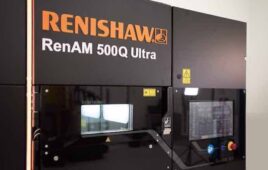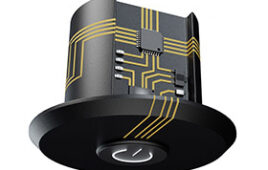2013 has brought a lot of new innovation and insight, but an older market has made itself known to the broader public and seen some impacting stories this year: Additive Manufacturing. Now that everybody seems to be jumping on the 3D-printing bandwagon, the use and advancement of additive manufacturing has taken off.
Read: Meet the Maker
So, here are this year’s top ten stories centered on additive manufacturing and 3D printing:
#10 – 3D Printers Emit Harmful Particles
Though the news seemed like a moot point, a study at the Illinois Institute of Technology revealed that 3D printers can emit harmful particles if used in a confined space without proper ventilation. This seemed like common sense and an easy fix, but the small uproar from the public spurred a new market for 3D printer ventilation systems.
#9 – Crooks Scam Patrons with 3D Printed ATM Machines
Criminals in Sydney, Australia developed a process to use a commercial 3D printer to scam ATM users out of their hard-earned cash. By creating faux ATM components, the thieves make a copy of the victim’s card while, at the same time, allowing the patron to receive their money from the actual ATM.
#8 – Ford Engineers Develop New Form of Manufacturing
Engineers at Ford have developed a new rapid-manufacturing technology that creates sheet metal parts in low-volume runs – a process that has been incredibly expensive and time-consuming in the past. The process utilizes CAD, and has the potential to replace traditional sheet-metal presses.
#7 – Printing Silver Circuit Boards on Multiple Materials
A successfully funded Kickstarter project, known as the EX1 Circuit Board Printer, aimed to make prototyping electronics as simple as importing and image and pushing print. As the team continues to improve the resolution of the printer (currently 1.27 mm pin spacing), they hope to satisfy both the hobbyist and professional markets with the EX1.
#6 – Victoria’s Secret for Snow Angels
Though the technology wasn’t terribly innovative, nor were the designs, this RapidFIRE video was one of the most viewed in 2013. I’ll give you two guesses why, but you’ll only need one.
#5 – Printing Carbon Fiber Parts
A Kickstarter startup launched a new 3D printing filament material known as Proto-Pasta. Though the printed material is only 15 percent carbon-fiber, the components are stronger and lighter-weight than their PLA brethren.
#4 – Stratasys Merges with MakerBot
One of the 3D-printing behemoths, Stratasys, took over MakerBot back in August in a $403M deal. MakerBot, which has made itself the namesake for at-home 3D printing, is considered a prosumer printer company, which gave Stratasys a firm grasp on the 3D printing market from amateur to industrial.
#3 – Hydrogen Rocket Injector Built with Non-Traditional Tech
Aerojet Rocketdyne and NASA successfully completed hot-fire tests of a new rocket engine with 3D-printed parts. Using selective laser melting, the team hopes to use this process to reduce the time and cost to manufacture low-volume components.
#2 – Researchers Develop an On-the-Fly 3D Bio Printer
Researchers at UOW in Australia developed a bio-pen that allows surgeons to sketch cells onto damaged bone tissue. These customized implants are printed with cells and a scaffolding, providing support for the patient while the customized implant assists in bone and cartilage regeneration.
#1 – 3D-Printed Guns
This touchy subject made a lot of headlines at the beginning of this year, and even got PD&D some attention from the Huffington Post. As the knowledge of 3D printing grew in the mainstream throughout the year, so did the (unjust) concern over 3D-printed guns. So much so that a group of police officers arrested a man in the UK for allegedly printing gun components, which turned out to be replacement parts for his printer.
Honorable Mention – The World’s First Metal 3D Printed Gun
With all of the bad press and flailing arms over 3D-printed (plastic) guns, Solid Concepts, a 3D Printing services company, decided to print a metal 1911 classic design gun, to demonstrate the capabilities of 3D printing. Using selective laser sintering, the company created a 1911 out of stainless steel and topped off with a printed, carbon-fiber hand grip.
What do you expect to see from the additive manufacturing industry in the coming year? Comment below or email [email protected].
Filed Under: 3D printing • additive • stereolithography, Rapid prototyping




